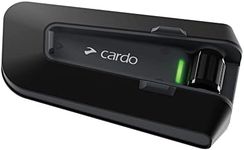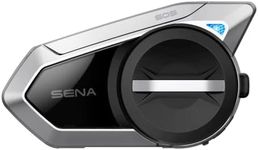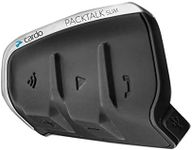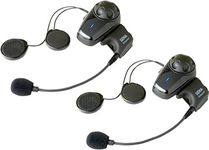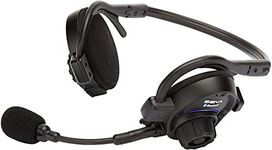Buying Guide for the Best Motorcycle Intercoms
Choosing the right motorcycle intercom can make your rides safer, more enjoyable, and more connected. Whether you ride solo or with a group, an intercom helps you communicate with fellow riders, listen to music, get GPS directions, or take calls without taking your hands off the handlebars. To find the best fit, think about how you ride, who you ride with, and what features matter most to you. Understanding the key specifications will help you make a smart choice that matches your needs.RangeRange refers to the maximum distance over which the intercom can maintain a clear connection between units. This is important because it determines how far apart you and your riding partners can be while still communicating. Short-range intercoms (up to 500 meters) are suitable for close group rides or city commuting, while mid-range (500 meters to 1 kilometer) works well for small groups or open roads. Long-range intercoms (over 1 kilometer) are best for large groups or touring where riders may get spread out. Choose a range that matches your typical riding scenario—if you often ride in a tight group, a shorter range may suffice, but for long-distance or group rides, opt for a longer range.
Number of ConnectionsThis spec tells you how many riders can be connected and communicate at the same time. Some intercoms only support two-way communication, while others allow group chats with several riders. If you usually ride with just one passenger or friend, a two-way system is enough. For group rides, look for intercoms that support four or more connections. Think about your usual riding companions and pick a system that can handle your group size.
Battery LifeBattery life indicates how long the intercom can operate before needing a recharge. This is crucial for long rides or trips where charging options are limited. Shorter battery life (up to 8 hours) may be fine for daily commutes, while longer battery life (10-15 hours or more) is better for touring or all-day rides. Consider how long you typically ride and choose a battery life that won’t leave you disconnected mid-journey.
Audio Quality and Noise CancellationAudio quality determines how clearly you can hear and be heard, especially at high speeds or in noisy environments. Noise cancellation technology helps reduce wind and engine noise, making conversations clearer. Basic intercoms may have standard audio, while advanced models offer high-definition sound and strong noise filtering. If you ride at high speeds or in noisy conditions, prioritize good audio quality and noise cancellation to ensure clear communication.
Mounting and CompatibilityMounting refers to how easily the intercom attaches to your helmet, and compatibility means whether it fits different helmet types (full-face, open-face, modular). Some systems are universal, while others are designed for specific helmet styles. If you have a unique helmet or plan to switch helmets, look for a versatile mounting system. Make sure the intercom you choose can be securely and comfortably attached to your helmet.
Waterproofing and DurabilityWaterproofing and durability indicate how well the intercom can withstand rain, dust, and rough conditions. This is important for riders who travel in all weather or on challenging terrain. Basic models may be splash-resistant, while more robust units are fully waterproof and shockproof. If you ride in varied weather or off-road, choose a model with higher durability and waterproof ratings to ensure reliability.
Bluetooth and Device IntegrationBluetooth capability allows the intercom to connect with smartphones, GPS devices, and music players. Some intercoms offer basic Bluetooth for calls and music, while others support advanced features like voice commands or multiple device pairing. If you want to listen to music, get navigation prompts, or take calls, look for strong Bluetooth integration. Consider what devices you want to connect and make sure the intercom supports them.

